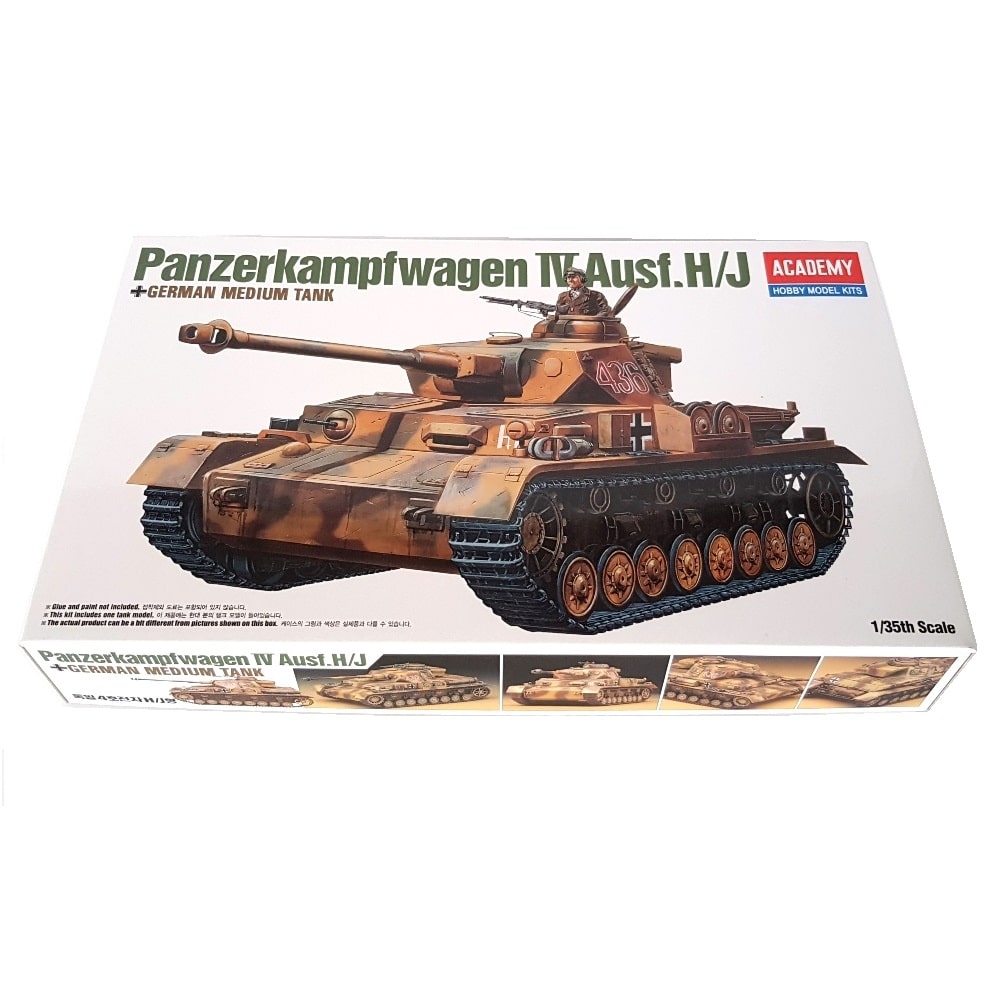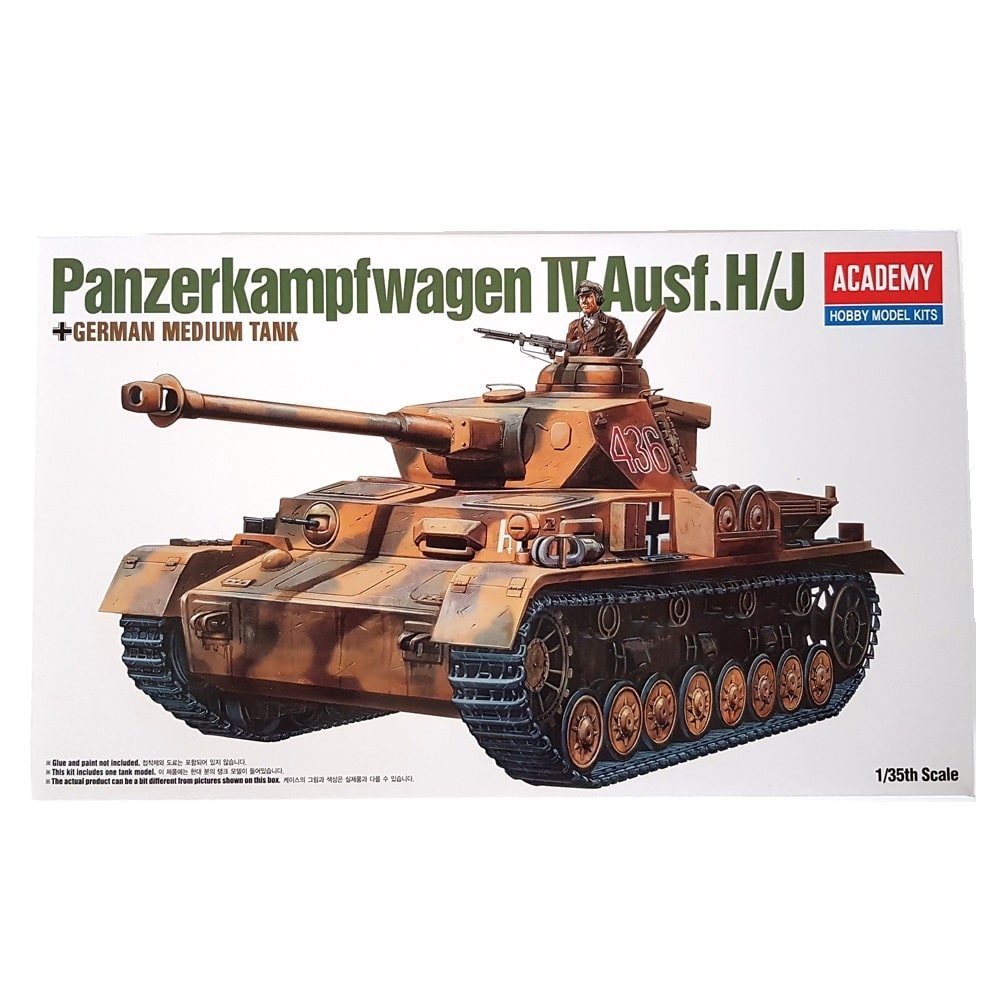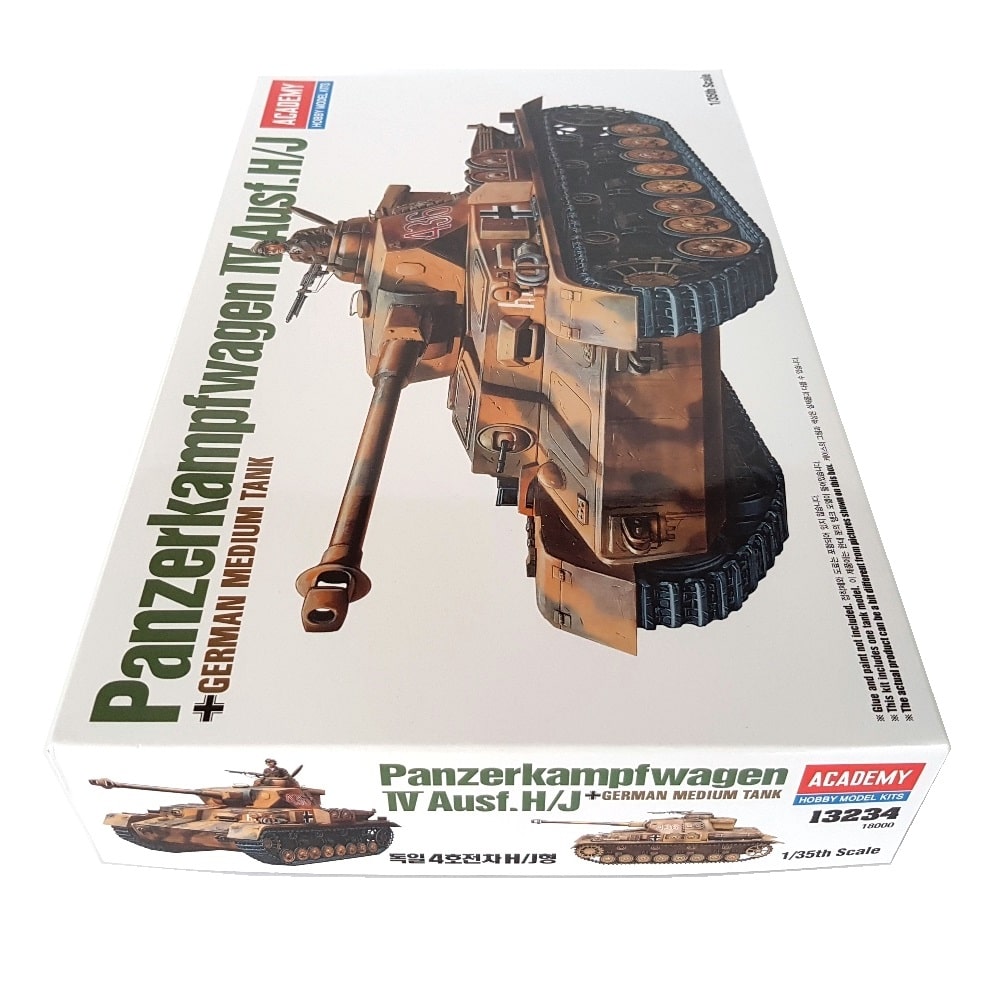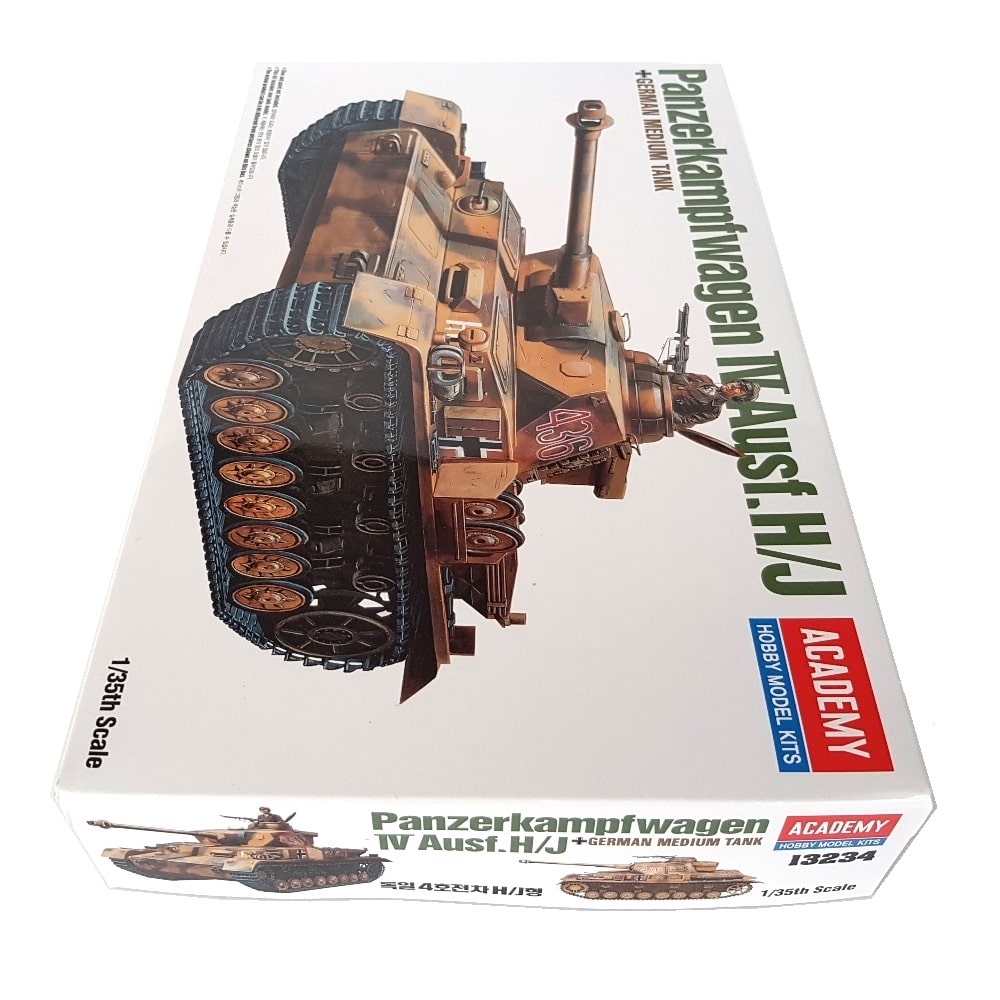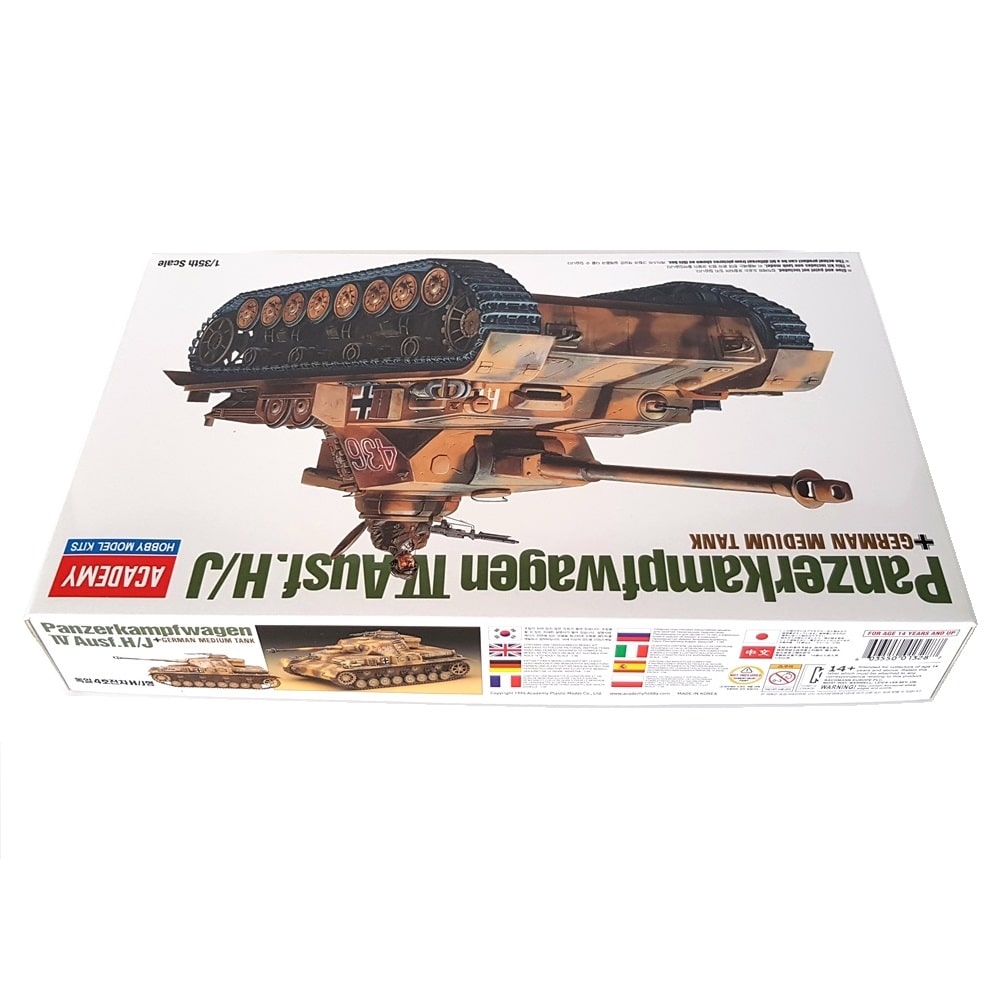ACADEMY : 13234
1:35 German Panzerkampfwagen IV Ausf. H/J PANZER Tank - ACADEMY
1:35 German Panzerkampfwagen IV Ausf. H/J PANZER Tank - ACADEMY
Couldn't load pickup availability
The Panzerkampfwagen IV (PzKpfw IV), commonly known as the Panzer IV, was a German medium tank developed in the late 1930s and used extensively during the Second World War. Its ordnance inventory designation was Sd.Kfz. 161. The Panzer IV was the most numerous German tank and the second-most numerous German armored fighting vehicle of the Second World War, with some 8,500 built. The Panzer IV chassis was used as the base for many other fighting vehicles, including the Sturmgeschutz IV assault gun, the Jagdpanzer IV tank destroyer, the Wirbelwind self-propelled anti-aircraft gun, and the Brummbar self-propelled gun.
The Panzer IV saw service in all combat theaters involving Germany and was the only German tank to remain in continuous production throughout the war. The Panzer IV was originally designed for infantry support while the similar Panzer III would fight armoured fighting vehicles. However as the Germans faced the formidable T-34, the Panzer IV had more development potential with a larger turret ring to mount more powerful guns and took over the anti-tank role. The Panzer IV received various upgrades and design modifications, intended to counter new threats, extending its service life.
Ausf. H, began production in June 1943 and received the designation Sd. Kfz. 161/2. The integrity of the glacis armor was improved by manufacturing it as a single 80-millimetre plate. A reinforced final drive with higher gear ratios was introduced. To prevent adhesion of magnetic anti-tank mines, which the Germans feared would be used in large numbers by the Allies, Zimmerit paste was added to all the vertical surfaces of the tank's armor. The turret roof was reinforced from 10-millimetre to 16-millimetre and 25-millimetre segments. The vehicle's side and turret were further protected by the addition of 5-millimetre hull skirts and 8-millimetre turret skirts. This resulted in the elimination of the vision ports located on the hull side, as the skirts obstructed their view. During the Ausf. H's production run, its rubber-tired return rollers were replaced with cast steel, a lighter cast front sprocket and rear idler wheel gradually replaced the previous components, the hull was fitted with triangular supports for the easily damaged side skirts, the Nebelwurfgeraet was discontinued, and a mount in the turret roof, designed for the Nahverteidigungswaffe, was plugged by a circular armored plate due to initial production shortages of this weapon. These modifications meant that the tank's weight increased to 25 tonnes. In spite of a new six-speed SSG 77 transmission adopted from the Panzer III, top speed dropped to as low as 16 km/h on cross country terrain.
Ausf. J was considered a retrograde from the Ausf. H. Born of necessity, to replace heavy losses, it was greatly simplified to speed production. The electric generator that powered the tank's turret traverse was removed, so the turret had to be rotated manually. The turret traversing mechanism was modified and fitted with a second gear which made hand-operation easier when the vehicle was on sloping terrain. On reasonably level ground, hand operation at 4 seconds to traverse to 12.5° and 29.5 seconds to traverse to 120° was achieved. The resulting space was later used for the installation of an auxiliary 200-litre fuel tank; road range was thereby increased to 320 km, The remaining pistol and vision ports on the turret side hatches were removed, and the engine's radiator housing was simplified by changing the slanted sides to straight sides. Three sockets with screw threads for mounting a 2-ton jib boom crane were welded on the turret roof while the hull roof was thickened from 11-millimetre to 16-millimetre. In addition, the cylindrical muffler was replaced by two flame-suppressing mufflers. In June 1944 Wa Pruf 6 had decided that because bomb damage at Panzerfirma Krupp in Essen had seriously jeopardized tank production, all plates which should have been face-hardened for the Panzer IV were instead made with rolled homogeneous armour plate. By late 1944, Zimmerit was no longer being applied to German armored vehicles, and the Panzer IV's side-skirts had been replaced by wire mesh, while the gunner's forward vision port in the turret front was eliminated and the number of return rollers was reduced from four to three to further speed-up production.
